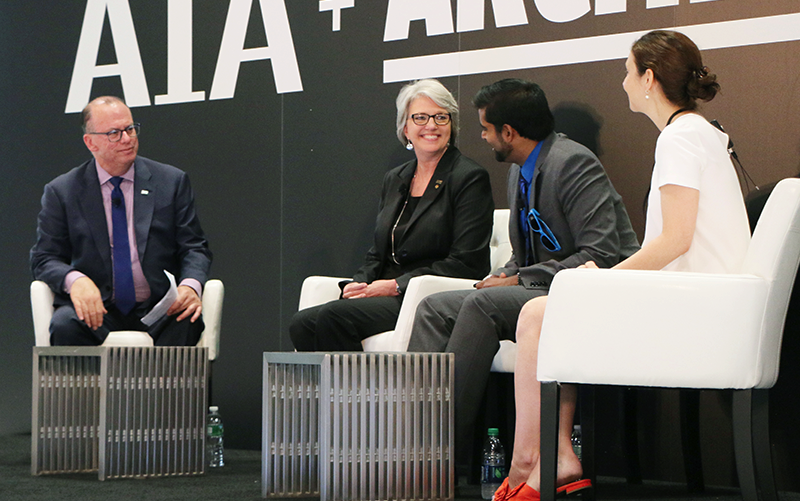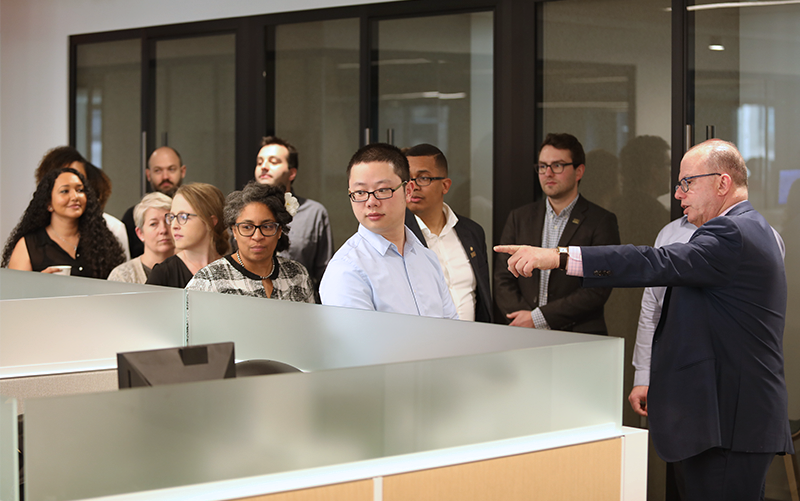Let’s Go Further
NCARB CEO Michael J. Armstrong reflects on the Council’s evolution and anticipates how the organization—and architectural licensure—can prepare for the future.
The chronicled history of NCARB has come alive as we’ve learned more about the people who committed their time and talent to the mission of public protection through architectural regulation. This focus on mission carried the Council’s leaders—volunteers and staff alike—through challenges ranging from the financial to the political. A constant awareness of the evolving approach to practice, and its impact on the evolution of regulation, pulled and pushed the Council further in the direction of increased capacity—whether it be its agility regarding operations, its flexibility regarding implementations, or its sensitivity regarding the needs of its Member Boards, customers, and the public at large.
Challenging the Status Quo
At this singular moment of the Council’s Centennial in 2019, the push/pull to remain agile, flexible, and sensitive is omnipresent. We anticipate the future by exploring how technology in the practice toolkit may force a significant change in the regulatory toolkit. We aspire to challenge conventional wisdom regarding the measurement tools for initial qualification: How can the Council promote education standards encouraging a useful introduction to practice concepts integrated with the predominant focus on teaching toward broad and diverse design concepts? How can we motivate supervising practitioners to deliver meaningful mentorship concurrent with compliance review for experience requirements? How will examination continue to reflect comprehension and competence that is current and transferable to practice?

In our current form we function as we have throughout our first 100 years: as an advisory creation of jurisdictional governments. Thus we are derived from, and beholden to, the constructs and the consent of state and other jurisdictional governments. Today every jurisdiction employs some version of the Council’s consensus-driven portfolio of pre- and post-licensure programs. But even as we maintain this complex relationship, the future of this relationship may challenge our programmatic foundations. Namely, will the framing of architectural licensure around the “three E’s” of education, experience, and examination continue its relevance in the Council’s second century, and will licensure itself be relevant as a means of assuring public protection?
Embracing Continuous Evolution
There are additional layers to the story of how our foundation will impact our future. While the Council’s mission is to aid Member Boards in their role of protecting the public, it also functions as a nonprofit corporation. At the 100-year mark, we employ over 100 full-time employees. Our business model, at a macro level, is based upon break-even or slight deficit programs that benefit emerging professionals while gathering additional revenue from certification fees, which in turn enables us to deliver superior services—customer relations, outreach and communications, current-state examination development and administration, relevant experience and education frameworks, Member Board support and advocacy, and perhaps most significantly a robust and in-sourced information technology capacity.
Will the framing of architectural licensure around the “three E’s” continue its relevance … and will licensure itself be relevant as a means of assuring public protection?
Our “go further” brand is propelling us deeper into transforming the Council into an information management organization dependent upon a customized, secure, and dynamic capacity to meet the needs of its diverse user base. Our efforts to sustain the Council’s momentum through proactive investments and fresh approaches to service require sustainable revenue sources. How should our business model evolve? Are we prepared for a future where information may supersede regulation as the arbiter of qualification to protect the public? These complex and provocative questions are spurring experimentation in monetizing new NCARB products and services that could be repurposed for external organizations. Future experiments may include expanding or reinventing the post-licensure certification credential, and/or looking at pre-licensure paraprofessional credentialing.
Positioning for the Future
Positioning a resilient Council and ensuring our future relevance demands ongoing strategic discussions regarding new programs and services, along with a determination of marketplace interest and stakeholder risk tolerance. Such a future will require a visionary partnership between volunteer leaders, Member Boards, staff, and the larger community of customers and opinion leaders. Today we are promoting “going further” through introducing a refreshed Strategic Plan, an integration of organizational business and work plans complimentary to the Strategic Plan, and an ongoing commitment to prioritize dedicated blocks of time toward strategic discussion at every Board meeting. In short, we work every day to create, maintain, and feed a corporate culture that is open, responsive, and restless.

My tenure as Chief Executive Officer began with reciting the quote from our National Archives building in Washington, DC: “What is Past is Prologue.” NCARB’s Centennial tells the story of an incredible prologue of sacrifice and hope, creativity and prudence, planning and action. To today’s readers and those of future generations: it is our sincere belief that the story of the Council’s first 100 years is one that reveals the effort of many to best position the Council to respond to second century challenges and opportunities.
Michael J. Armstrong
Chief Executive Officer